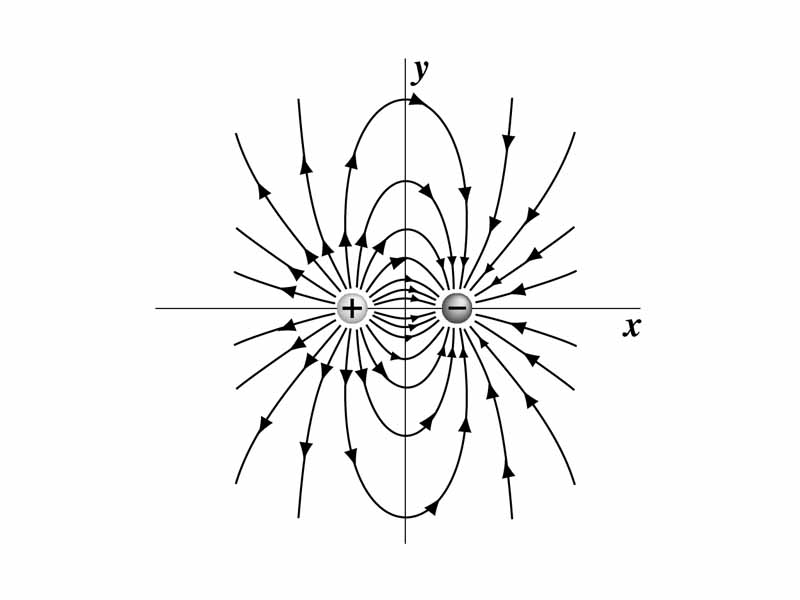Electricity is the portion of Electricity and Magnetism dealing with the interactions involving electrostatic force, or the Coulomb force as it is often called. The Coulomb force is a force of attraction or repulsion between charged particles which can occur on stationary charges. The magnitude of the electrostatic force is inversely proportional to the square of the distance between the particles. Electricity is the only chapter to appear twice in the Main Cycle. We will revisit this material for another Main Cycle treatment again in Week 17 of the course.
Electricity is one of the two or three most important topics for the MCAT both in terms of straight-out questions on the test and because the understanding of electricity lays the groundwork for understanding chemistry. Perhaps a few other topics, such as Chemical Bonding, Solutions, or The Cell are as important for the MCAT as a direct source of questions, but if you don't understand Electricity very well, you won't understand those topics well either. Grip down and work hard here.
WikiPremed Resources
Electricity Cards
Conceptual Vocabulary Self-Test
Basic Terms Crossword Puzzle
Basic Puzzle Solution
Conceptual Vocabulary for Electricity
Electricity
The space surrounding a charged particle or in the presence of a time-varying magnetic field has a property called a electric field, which exerts force on other charged particles.
Electric charge is a fundamental conserved property of some subatomic particles, which determines their electromagnetic interaction.
The coulomb is the SI unit of electric charge.
Electrical potential difference is the voltage present between two points, or the voltage drop transversely over an impedance.
The volt is the SI derived unit of electric potential difference or electromotive force.
Coulomb's law states that the magnitude of the electrostatic force between two point electric charges is directly proportional to the product of the magnitudes of each charge and inversely proportional to the square of the distance between the charges.
Voltage is the difference of electrical potential between two points of an electrical or electronic circuit, expressed in volts.
Electrical energy refers to the energy due to the interaction of electric charges with an electric field, and the energy stored in that field.
A capacitor is an electrical device that can store energy in the electric field between a pair of closely spaced conductors.
A point charge is an idealized model of a charged particle as being located within a mathematical point with no dimensions.
Electrostatics is the branch of physics that deals with the electrical phenomena which can be observed with stationary electric charges.
Electric potential is the positional energy per unit of charge associated with a static electric field, typically measured in volts.
Michael Faraday was an English chemist and physicist who contributed significantly to the fields of electromagnetism and electrochemistry. He established the basis for the magnetic field concept in physics.
The linear, surface, or volume charge density is the amount of electric charge in a line, surface, or volume, measured in coulombs per metre, square metre, or cubic metre, respectively.
The farad is the SI unit of capacitance.
A dielectric, or electrical insulator, is a substance that is highly resistant to the flow of an electric current.
The elementary charge is the electric charge carried by a single proton, or equivalently, the negative of the electric charge carried by a single electron.
A vector field is a construction in vector calculus which associates a vector to every point in a locally Euclidean space.
Gauss's law gives the equivalence relation between any flux, e.g. of liquids, electric or gravitational, flowing out of any closed surface and the result of inner sources and sinks.
Permittivity is a physical quantity that describes how an electric field affects and is affected by a dielectric medium.
The triboelectric effect is a type of contact electrification in which certain materials become electrically charged after they come into contact with another different material and are then separated.
An electric arc is an electrical breakdown of a gas which produces an ongoing plasma discharge, resulting from a current flowing through normally nonconductive media such as air.
A Gaussian surface is a closed two-dimensional surface through which a flux or electric field is to be calculated.
Vacuum permittivity is a fundamental physical constant, connecting mechanical quantities to the units for electrical charge, for example in Coulomb's law.
The Leyden jar is a device for storing electric charge invented in 1745. It was the first capacitor.
Surface charge is the electric charge present at an interface, for instance, on the exterior of a semiconductor material, or for example, or on the outer fold of a protein.
The relative static permittivity of a material under given conditions is a measure of the extent to which it concentrates electrostatic lines of flux.
The electric susceptibility of a dielectric material is a measure of how easily it polarizes in response to an electric field, which, in turn, determines the electric permittivity of the material.
The statcoulomb, franklin, or esu is the physical unit for electrical charge used in the centimetre-gram-second (cgs) electrostatic system of units.
The polarization density is the vector field that expresses the density of permanent or induced electric dipole moments in a dielectric material.




